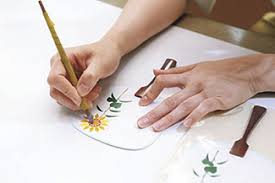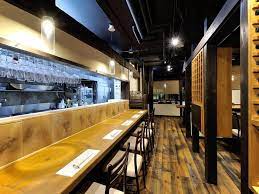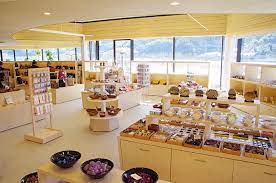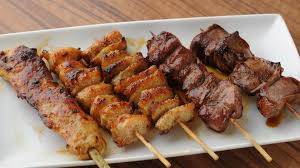Thank you for participating in Vamos’s “journey” from afar today!
I would like to experience Japanese traditional culture together, so let’s enjoy it together! !!
Now, I will explain this “journey of my own”.
Area

Looking at the map of Japan, I will go to this place this time.
Itinerary
Day 1

Kinosaki Onsen Ropeway
(城崎温泉ロープウェイ)
Feel Kinosaki in the changing seasons
⇩

Onsen-ji
(温泉寺:Onsenji Temple)
Kinosaki Onsen guardian temple
⇩

Kinosaki Onsen Gai
(城崎温泉街:Kinosaki Onsen Town)
A hot spring town that is said to be “the best place for yukata in Japan”
⇩

Okesho Sengyo no Kaichuen
(おけしょう鮮魚の海中苑:Okesho Fresh Fish Undersea Garden)
Wonderland of seafood
⇩

Kinosaki Mugiwara Zaiku “Denshokan”
(城崎麦わら細工「伝承館」:Kinosaki Straw Craft Traditional Museum “Denshokan”)
300 years of tradition nurtured in Kinosaki
⇩

Irori Dining Mikuni
(いろりダイニング三國)
Dinner
Day 2

Cycling
Let’s experience the streets of Toyooka by bicycle
⇩

Genbudo Museum
(玄武洞ミュージアム)
Toyooka Moriyanagi Crafts and Stone Museum
⇩

Yakitori Daikichi
(やきとり大吉)
Dinner
Day 3

Izuishi Jo Ato
(出石城跡:Izushi Castle Ruins)
Famous place for cherry blossoms of 58 thousand stones
⇩

Izuishi Joka Machi
(出石城下町:Izushi Castle Town)
Toyooka City Izushi Traditional Buildings Preservation Area
⇩

Kogetsudo Uchibori Ten
(湖月堂 内堀店:Kogetsudo Uchibori store)
Lunch
⇩

Izuishi Shuzo
(出石酒造:Izushi sake brewery)
A long-established store characterized by the creation of red clay walls
⇩

Eirakukan
(永楽館)
Kinki’s oldest playhouse
The above is this itinerary.
Let’s enjoy “your own trip” in the city of Toyooka for three days this time!
Day 1
Kinosaki Onsen Ropeway(城崎温泉ロープウェイ)

It has been about 60 years since the opening of Daishiyama.
At the top of the mountain, you can get a panoramic view of the cityscape of Kinosaki below and the Sea of Japan in the distance.

Take this ropeway to the hot spring temple.
The view from Kinosaki Coffee Miharashi Terrace Cafe is a superb view that is listed as one star in the travel version Michelin Guide [Michelin Green Guide Japan].

I am also particular about coffee beans, and spending time with coffee in Kinosaki will be a memorable time.
Onsen-ji(温泉寺)

It was founded by Shonin Dochi in 738 (Tenpyo 10).
Dochi Shonin made a big wish for sentient beings, visited various countries, came to the land of Kinosaki in the first year of Yoro, and was trained for 1,000 days by the oracle of our guardian, Shisho Myojin. Kinosaki Onsen was opened with the hot springs springing up (currently Mandarayu).

The mountain and temple names of Suedaiyama Onsenji were given by Emperor Shomu as the “guardian temple of Kinosaki Onsen”, and have been the guardian deity of the Sanin region for about 1,300 years since then.
Kinosaki Onsen Gai(城崎温泉街)

Kinosaki Onsen has a long history, about 1300 years after its opening.
It is said to have already existed in the Heian period and has been loved for a long time.

It is a famous hot spring that was said to be the best hot spring in Japan during the Edo period, and it is also a literary town familiar to many literary masters and family members.
The hot spring town that retains its atmosphere is lined with old folk houses and souvenir shops along the Otani River that runs through the center.
The standard of Kinosaki Onsen at night is “Outdoor hot spring tour”.

In fact, in addition to the hot springs that each inn has, there are seven hot springs that guests of the inn can use for free.
And in each hot water, for example

[Kounoyu:鴻の湯] = A hot spring that invites a happy couple, immortality, and happiness
[Mandarayu:まんだら湯] = Prosperous business, good harvest, lifelong hot water
[Gosho-no-Yu:御所の湯] = Fire-fighting disaster prevention, good marriage, beauty hot water
[Ichinoyu:一の湯] = Pray for success, traffic safety, good luck blessing hot water
[Yanagi-yu柳 湯] = Child-birth / child-giving hot water
[Jizo-yu:地蔵湯] = Home safety, Mizuko kuyo, sentient beings salvation hot water
[Station building hot spring Satonoyu:駅舎温泉 さとの湯] = Fureai no Yu
So, each hot water has its own benefits.
Which hot spring do you want to take?
Okesho Sengyo no Kaichuen(おけしょう鮮魚の海中苑)

A long-established store with a history of about 100 years, founded in 1925 (Taisho 14).
You can enjoy fresh seafood delivered directly from the local Tsuiyama fishing port and market.

Fresh fish shops are lined up side by side, and you can cook what you buy as it is to your liking.
Speaking of Kinosaki, snow crab.

The pine needle crab (male snow crab) landed at the Kinosaki Tsuiyama fishing port is said to be the brand crab Tsuiyama crab.
The soft and fat Tsuiyama crab and the richly sweetened “crab and shrimp bowl” have a luxurious taste.
Kinosaki Mugiwara Zaiku「Denshokan 」(城崎麦わら細工「伝承館」)

“Kinosaki Straw Craft”, which uses barley straw as a raw material to work on paulownia boxes and colored paper, has a history of 300 years and is designated as a traditional craft of Hyogo Prefecture and an intangible cultural property of Toyooka City.
The traditional craft “Kinosaki Straw Hat Craft” is a valuable work of art produced only in Kinosaki in Japan.

Siebold, a German doctor who came to Japan from the Netherlands in the late Edo period, brought back a large amount of materials when he returned to Japan, and they are called the Siebold collection.
“Kinosaki Straw Hat Craft” was also recorded in the Siebold Collection, and the craftsmanship of Kinosaki became known across the sea.
In addition, it is said that he received the highest honorary award at the St. Louis World’s Fair in 1902.

The “Kinosaki Straw Hats Traditional Museum” is a place where you can take a closer look at not only the works of modern craftsmen (about 40 works) of such “Kinosaki Straw Crafts” but also about 200 works of the Meiji, Taisho, and early Showa periods. is.
The Densetsukan is a beautiful building that makes the best use of the white-walled dozo, and has a retro look.

There is also an experience menu for making various straw crafts such as postcards and uchiwa, and you can experience it in about 15 to 30 minutes.
Learn the traditional crafts of bright colors and make your own original work in commemoration!
Irori Dining Mikuni(いろりダイニング三國)

It is the only restaurant specializing in Tajima beef at Kinosaki Onsen.

Buy one premium Tajima beef “Tajima Tuna”, which is shipped only a few per month, and enjoy valuable dishes that can only be eaten here.
Day 2

Let’s start cycling on the second day trip!
Genbudo Museum(玄武洞ミュージアム)

The national natural monument “Genbudo(玄武洞)”.
Genbudo is a regular and clean crevice created when the magma that flowed out of the mountaintop due to volcanic activity that took place 1.6 million years ago cooled and solidified.

It is a museum at the entrance of the “Genbudo”.
The museum, which opened in 1972, exhibits the Toyooka dinosaur work, which is a national traditional craft with a tradition of 1200 years, and about 2,500 pieces centered on rare stones collected from all over the world. The collection of surplus gems, strange stones, fossils, dinosaurs, minerals, etc. is spectacular.

A facility that imagines a hexagon of basalt and an array of five dongs.
Here, you can experience basket knitting and making stone accessories using “Koriyanagi” and “rattan” from Toyooka, which are used for Moriyanagi work.
You can take 15/30/60/90 minutes as a souvenir if you choose the work time that suits you.
I recommend a pen stand.

It’s practical and easy to take home, and the time is about 30 minutes, so I think the work time is just right.
In addition to the museum and experience menu, there are restaurants & cafes, confectionery workshops, Tajima souvenirs & museum shops, ferry boats and pleasure boats, so you can enjoy the rich natural scenery!
Yakitori Daikichi(やきとり大吉)

It is stated in the literature of the Heian period that yakitori was started to be eaten.
There is also a culture of izakaya, and in Japan, at the end of work, I take a break and drink while drinking (also called a side dish or a knob).

We carefully prepare each of the carefully selected ingredients and are proud of their taste and freshness.
Day 3
Let’s start the trip on the third day!
Izuishi Jo Ato(出石城跡)

Izushijo is a castle built at the foot of Mt. Yuko by Yoshihide Koide in 1604.
Along with the construction of Izushi Castle, the castle town was improved and the townscape of Izushi was formed.

While replacing the castle owner with Mr. Koide, Mr. Matsudaira, and Mr. Sengoku, it was proud as the main castle of 58,000 stones for 270 years until the Meiji version was repatriated.
All the buildings were demolished by the abolition of the castle in the Meiji era, but the stunning stone wall of Nozomi remains as it is, and the corner tower, the gate, and the bridge have been restored, so you can remember the remnants of the past. I will.

The main attraction is the view from the Inari Shrine at the top.
You can overlook the castle from the top of the stone steps and pass through the beautiful vermilion torii gate, and you can enjoy the cityscape unique to the castle town below.

Also, in spring, it will be a famous place for cherry blossoms with Yoshino cherry trees and double cherry blossoms in full bloom against the backdrop of the castle.
The Izushi Sakura Festival is held in early April and is crowded with events such as the “Izushi Soba Eating Tournament”.
Izuishi Joka Machi(出石城下町)

The castle town, which is divided into towns like a grid, is also called Tajima’s small Kyoto, and is an important traditional buildings preservation district of the country.
Shinkoro, the symbolic clock tower of Izushi in the castle town, was built in 1871 (Meiji 4) and has been protecting the town for about 150 years.

In the old days, drums were used to inform the hour (dragon) every hour.
At Izushi Castle, one of Tajima’s three major festivals, the Izushi Izushi Festival, is held every spring.
It is a traditional festival that has continued for more than 400 years at Arikoyama Inari Shrine in the uppermost main enclosure of Izushi Castle.

During the Edo period, when the social division system was strict, the main gate of the castle was opened only once a year on the first day of the year, and ordinary townspeople were allowed to visit.
Therefore, on the day of the festival, worshipers of Santan (Tajima, Tango, Tamba) gather and it is said to be the grand festival of Santanichi.

It is said that it will not snow anymore after the beginning of Izushi, and even now, there are more than 300 stalls lined up as a festival to wish for a good harvest and prosperous business, and it is crowded with tens of thousands of tourists.
You should experience this festival first hand.
Kogetsudo Uchibori Ten(湖月堂 内堀店)

It is said that “Izushi Soba”, which has been handed down for more than 300 years in a climate blessed with the beautiful nature of Izushi, the hometown of the heart, was handed down by Mr. Sengoku when he changed his country from Ueda Castle in Shinshu to Izushi. I will.

The “Izushi plate soba” is divided into small plates of Izushi ware, and it is now well known all over the country because of the fun of competing to eat one plate at a time and the taste of a simple hometown.
At the Kogetsudo Uchibori store, we use carefully selected ingredients and continue to firmly protect and hand down the three flavors of “freshly ground”, “freshly beaten” and “freshly boiled” without compromising the flavor of soba.
You can enjoy it slowly while looking at the symbol of Izushi, “Shinkoro”.

“Castle town” and “Izushi plate soba” are the goals of 1 million tourists visiting Izushi every year. The soba served on a small plate of beautiful white porcelain Izushi ware is the face of Izushi.

Although the store is different, the Soba Dojo was born to enjoy handmade soba noodles.
You can also enjoy the Izushi plate soba that you hit yourself, so let’s make it together!
Izuishi Shuzo(出石酒造)

Izushi Sake Brewery is a long-established brewery founded in 1708.
The representative brand “Rakurakuen” is a pure rice sake with a venerable name derived from “Sasazuru”, which is another name for sake, and “Rakurakuen”, the villa of the Izushi feudal lord, Sengoku.

Izushi Sake Brewery’s sake brewery has a unique atmosphere with clay walls that are said to have been built about 270 years ago.
Raku-zuru, which is made by sticking to the old-fashioned manufacturing method, can be sampled in the store.

You can enjoy delicious sake in a quaint building with a long history.
We tasted Junmaishu and the top selection.
It’s a little spicy, but it has little habit.

It was easy to drink and delicious, and it seemed to go well with Izushi soba.
In addition, the regular “Sake Brewery Concert” is now a specialty event of Izushi.
The style of enjoying music and sake in an old sake brewery is very popular.
Eirakukan(永楽館)

The Eirakukan was opened in 1901 (Meiji 34) and prospered as the center of Tajima’s popular culture, with Kabuki, Shinpa plays and vaudeville performances.
It was built by Kujiro Obata, the 11th leader of the Obata family, who has been selling dyeing for generations in the castle town of Izushi Castle.

With the times, movie screenings became the main focus, and the museum was closed in 1964 due to the spread of television and the diversification of entertainment.

After that, as time passed, people began to feel nostalgic for the Eirakukan of the past, and after about 20 years of activities for restoration, it was renovated in 2008, and after 44 years, the Eirakukan was revived.
How was your trip this time?

I briefly introduced what it is like, but when you actually come to the site, you will be asked to experience the history and traditions more concretely with the local people.
We look forward to guiding you in Japan!
Thank you for reading to the end!
Also, I would like to post an interesting part of Kansai.
Then, have a good trip from now on!
PS. We provide various information about Kansai in Japan, so please feel free to contact us if you would like to directly observe and experience Japanese traditional culture and food culture!
The content of the homepage is limited to Nara Prefecture, but if there is a place you would like to visit, please contact us and we will guide you!
Let’s find your own happiness together!




コメント